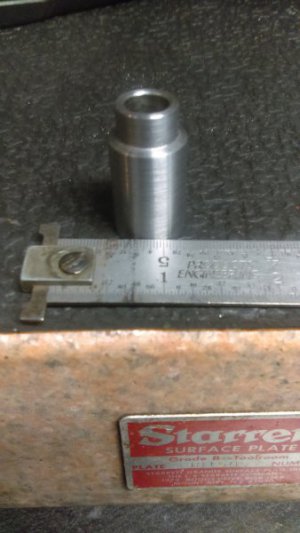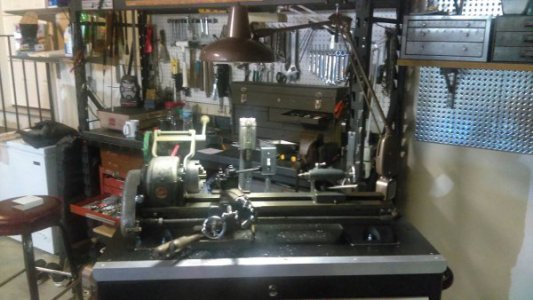Been awhile since posting so I thought Id share the first actual part I made on a lathe that actually will serve a purpose...drawbar spacer for the Atlas 618.
Everything went well until I decided to try to part off, way too much chatter. I have the qctp from LMS and the blade type cutoff tool that fit in the tool holder. I will read up on the parting issue as I know there is much info here on this. I already understand I was running too fast to part off. I've only had this lathe running for a couple weeks so overall I was happy with the outcome. So thanks to all who contribute their knowledge here, without that I do not think I would have gotten this far so quickly. Any recommendation on alternative parting tools I would be interested to hear.
Lastly here is the 618, got it 2 years ago in a box of pieces and finally got it running with all the help offered here.

Everything went well until I decided to try to part off, way too much chatter. I have the qctp from LMS and the blade type cutoff tool that fit in the tool holder. I will read up on the parting issue as I know there is much info here on this. I already understand I was running too fast to part off. I've only had this lathe running for a couple weeks so overall I was happy with the outcome. So thanks to all who contribute their knowledge here, without that I do not think I would have gotten this far so quickly. Any recommendation on alternative parting tools I would be interested to hear.
Lastly here is the 618, got it 2 years ago in a box of pieces and finally got it running with all the help offered here.

